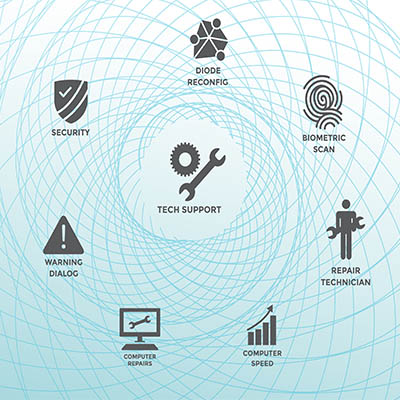Cybersecurity is a major part of business computing today, mainly because there are so many threats. Cybersecurity professionals and network administrators must innovate to confront these threats. This month, we thought we would review three of these innovations to give you an idea of what is being done to help businesses handle the rough-and-tumble cybersecurity landscape.
Advancements in AI-Powered Threat Detection
One of the most significant innovations in cybersecurity is the integration of artificial intelligence (AI) and machine learning into threat detection systems. These technologies enable security systems to analyze a lot of data in real-time, identifying patterns and finding anomalies that could indicate a cyberthreat. AI systems learn and adjust to new threats. This allows them to offer a more proactive defense. In contrast, traditional methods rely on fixed rules. This AI capability is especially crucial as cyberattacks become more sophisticated, with hackers using AI to craft more convincing phishing attacks or bypass traditional security measures.
Zero Trust Architecture
Zero Trust Architecture (ZTA) is reshaping how organizations approach security. Instead of assuming that everything inside a network is safe, ZTA operates on the principle that nothing can be trusted and everything has to be verified. This model requires continuous verification of every user and device attempting to access data and other computing resources, regardless of their location within the network. By implementing strong access controls and ensuring that only authorized users can access specific resources, ZTA significantly reduces the risk of internal threats and the spread of malware like ransomware inside a compromised network.
The Rise of Cybersecurity Automation
Automation is increasingly becoming a cornerstone of business, which also goes for cybersecurity strategies. As cyberthreats’ number and overall complexity continue to grow, manual response efforts are often insufficient. Cybersecurity automation leverages AI, machine learning, and other advanced technologies to automate routine tasks such as threat detection, incident response, and vulnerability management. This speeds up response times and reduces the likelihood of human error, which can be the most prevalent factor in a security breach. By automating repetitive tasks, cybersecurity professionals can focus on more complex issues, improving the overall cybersecurity profile of a business.
Every business needs to understand that hackers and scammers are getting more sophisticated, so it needs to innovate its cybersecurity posture. If you would like to talk about cybersecurity with the IT professionals at North Central Technologies, call us today at 978-798-6805.







